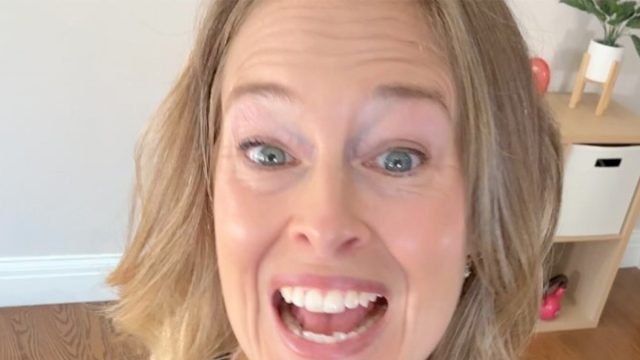10 Balance Exercises That Could Double Your Stability After 50

Balance becomes increasingly crucial as we age, and the statistics are eye-opening. Research shows that people over 50 who can't balance on one leg for just 10 seconds face twice the mortality risk in the following decade. Physical therapist Jessica Valant, with over 25 years of experience in rehabilitation and movement training, has developed a straightforward 10-minute routine to help improve your stability. As a respected PT, Pilates instructor, and women's health expert reaching over 800K YouTube subscribers, Jessica emphasizes that better balance is achievable at any age. These exercises, which you can do right in your own home, could significantly improve your stability and confidence in daily activities.
Understanding Balance and Why It Matters
"Balance happens when we include many different parts of what's going on," Jessica explains. "We have strength, we have mobility happening. It includes our eyesight, our vestibular system." This comprehensive approach to balance training addresses all these components, making it particularly effective for adults looking to maintain or improve their stability.
Setting Up Your Safe Practice Space
One of the best aspects of this routine is its simplicity. "All you need is a chair or a kitchen counter or a bathroom counter or a wall or anything close to hang on to," Jessica says. She emphasizes that wearing supportive shoes is perfectly fine, especially if you have any foot concerns.
RELATED: 3 Simple Stretches Made This Coach More Flexible in 2 Weeks
Foundation Exercise One Toe Raises
The routine begins with toe raises, a fundamental movement for ankle strength. Standing with feet hip-width apart, rise onto your toes and lower back down. "I want you to work on doing this without holding on to anything at all," Jessica advises, though she recommends starting with support if needed. For an extra challenge, try closing your eyes during the movement.
Building Knee and Hip Stability
"When falls happen, a lot of times they'll happen stepping off a curb or going downstairs," Jessica notes. To address this, she introduces mini squats. These aren't deep squats but rather gentle knee bends that improve mobility in your hips, knees, and ankles – all crucial for preventing falls.
Mastering Single-Leg Balance
The critical test of balance is standing on one leg. Jessica guides through this gradually: "This is called a single leg balance, but also we're doing a little bit of weight shifting. We're teaching that left leg how to hold the weight on its own." Start by holding onto support and work toward independence.
Dynamic Balance Through Marching
Slow marching exercises simulate real-world movements. "Try not to look down at your feet when you're doing this," Jessica instructs. "The more we kind of hunch and try to walk like this, the more likely we are to fall." Keep your posture tall and eyes forward.
RELATED: 8 High-Protein Foods with Nearly Zero Calories That Melt Fat
Lateral Stability Training
Side leg lifts add another dimension to balance training. "The sneaky part as a physical therapist, what I'm making you do right now is hold your weight on that left leg," Jessica reveals. This strengthens the standing leg while improving side-to-side stability.
Advanced Hip Mobility Work
The hip circle exercise combines lifting, opening, and lowering movements. As Jessica explains, "This is a lot of hip mobility, which believe it or not, really good for our balance and just for overall health in those joints." This movement builds both mobility and strength.
Essential Ankle Mobility
Calf stretches are crucial for maintaining ankle flexibility. Jessica demonstrates how to stretch while maintaining proper alignment, emphasizing the importance of keeping the back heel down and maintaining tall posture.
RELATED: 12-3-30 Walking Method: 20 Proven Tips to Lose Weight Faster
Progressive Challenge Training
"This isn't a single day workout to fix everything," Jessica emphasizes. "This is the long game." The routine concludes with balance challenges that can be progressively made more difficult, such as closing your eyes during exercises when you're ready. Always prioritize safety and work within your comfort level.
Jessica's repeats her key message: "You can do it every single day, or again, just pick and choose pieces of it to do at your kitchen counter anytime during the day to help your own balance, meet your body where it is and know that long-term you are doing something good for yourself." And if you enjoyed this article, take advantage of these 15 Quick Ways to Lose Body Fat Percentage in a Week




